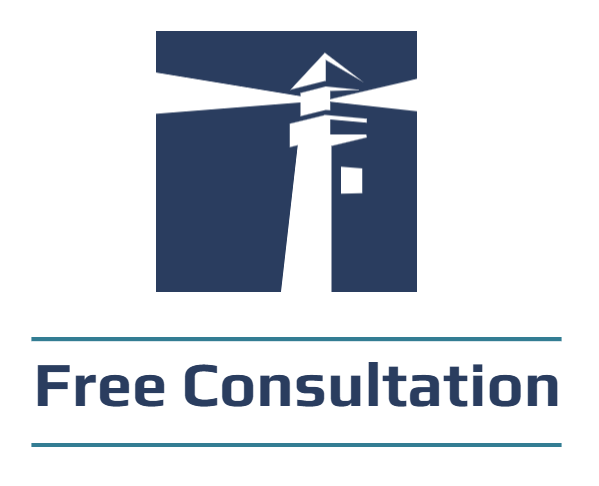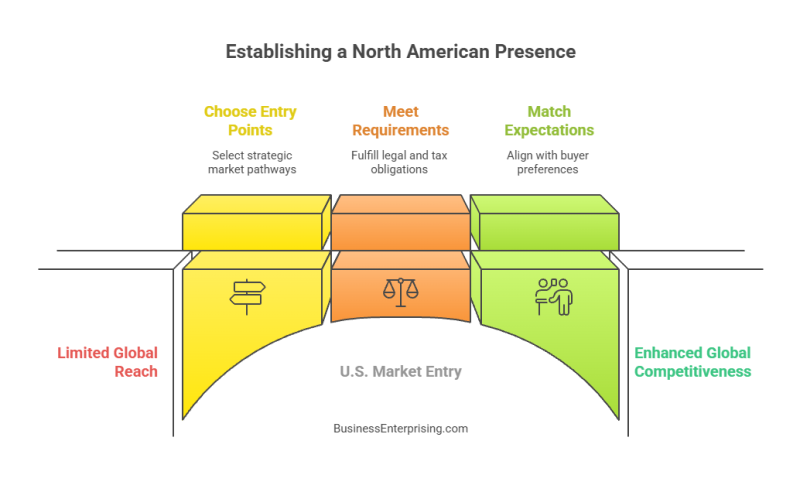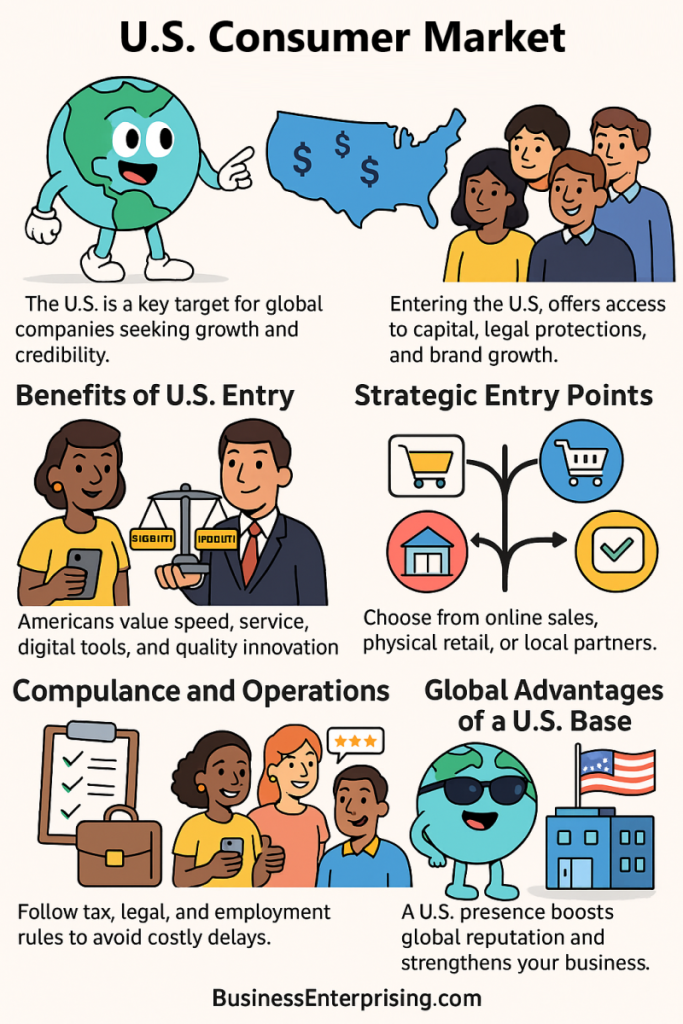
However, entering the U.S. requires more than product demand. You must also consider branding, compliance, and customer expectations. Each region, channel, and buyer group operates differently. Additionally, your entry plan must fit your business model and long-term goals.
The benefits are worth the effort. The U.S. offers exposure, market feedback, and partnerships that support broader growth. If your team can meet American standards, your business will improve overall. Therefore, many companies treat U.S. expansion as a foundation for global readiness.
You may choose e-commerce, retail, or partnerships to launch. Each entry point has unique strengths. Additionally, your internal systems must support fast shipping, quality control, and service response. Taking these steps early helps avoid mistakes that slow your progress.
Success depends on preparation and consistency. If you match your offer to what American buyers expect, your brand can build quickly. With time, presence in the U.S. boosts your reputation and attracts new customers abroad. That long-term value makes it worth pursuing.
Why the U.S. Remains a Top Destination for Foreign Companies
The U.S. remains one of the most attractive destinations for foreign companies seeking growth. Its consumer market is large and highly developed. With a population of over 330 million, the U.S. offers broad access to buyers with strong purchasing power. Therefore, companies across industries continue to view it as a top expansion target.
The U.S. consumer market accounts for a significant share of global spending. It includes millions of households with disposable income and a strong appetite for new products. Additionally, the country has a well-established financial system, offering access to funding and credit. That stability gives foreign businesses confidence when entering the market.
Industry diversity also plays a major role. Whether you’re in tech, healthcare, fashion, or food, the U.S. has a customer base for nearly every product category. You can reach consumers in both major metro areas and smaller regional markets. Therefore, the U.S. supports a range of business models, from e-commerce to brick-and-mortar.
Additionally, the maturity of the market means better infrastructure and logistics. Roads, ports, and digital networks allow companies to deliver products efficiently and at scale. A strong legal system also protects business interests and enforces contracts. These conditions lower risk and improve long-term planning.
Expanding into the U.S. gives your brand visibility in one of the world’s most influential markets. With the right approach, it can serve as a gateway to broader global recognition and new partnerships.
Advantages of U.S. Market Entry: Scale, Stability, and Visibility
Entering the U.S. market offers clear advantages for foreign companies looking to expand. The country provides both economic scale and long-term stability. With a strong currency and access to capital, the U.S. continues to attract businesses from all over the world. Therefore, many firms view it as a smart next step for global growth.
Additionally, the U.S. legal system supports business confidence. Intellectual property rights are protected, and contract enforcement is reliable. This structure helps reduce risk and allows you to focus on operations and growth. Clear regulations and transparent practices also make long-term planning more practical.
The size of the market itself adds major appeal. You can reach millions of potential buyers and expand quickly across states and regions. Whether your company is selling physical goods or digital services, the U.S. offers wide adoption potential. Therefore, the path to scaling is often faster than in smaller economies.
Brand visibility is another benefit. Success in the U.S. market adds credibility in other regions. It signals that your company can meet high standards and perform in a competitive space. Additionally, strong media coverage and marketing channels help amplify your brand once you enter the market.
The U.S. consumer market rewards businesses that bring quality, value, and innovation. If you’re prepared to commit to the market, the returns can be meaningful. With access to capital, a stable business environment, and global visibility, U.S. entry can serve as a key growth lever for your company.
Targeting U.S. Consumers: Demographics, Behavior, and Expectations
The U.S. consumer market includes a wide range of buyers with diverse backgrounds, tastes, and income levels. You must understand what they value to succeed. While preferences vary, most American consumers expect convenience, clear communication, and reliable service from the brands they support.
Additionally, digital engagement is a key factor in building trust. Consumers rely heavily on online research, social media, and reviews before making a purchase. Therefore, your website, product listings, and customer feedback should be accurate and easy to find. A responsive online presence builds credibility and can drive higher conversion rates.
Convenience plays a major role in buying decisions. Fast delivery, easy returns, and simple payment options are now expected. Many buyers also prefer mobile shopping and customer service that responds quickly. Therefore, any delays or friction can lead to lost sales or negative impressions.
Americans also value innovation and quality. They are open to trying new products but expect clear benefits. Product design, features, and performance should reflect their needs and preferences. Additionally, strong branding and packaging can influence buying behavior, especially in competitive categories.
Customer service matters as much as the product itself. Friendly, helpful support can turn first-time buyers into repeat customers. Therefore, invest in service teams that understand and meet customer expectations.
Understanding the U.S. consumer market requires more than selling. You must match how you operate with what buyers expect. When you meet those expectations, you gain trust, loyalty, and long-term success.
Strategic Entry Points: E-Commerce, Retail, and Distribution Channels
Entering the U.S. market can begin through several strategic pathways. Each entry method comes with different advantages and levels of control. You need to pick the one that best fits your product, budget, and long-term goals.
Selling through e-commerce marketplaces is a common first step. Platforms like Amazon and Walmart.com offer wide exposure and simplified logistics. Additionally, this approach requires less upfront investment than opening a physical store. You can test demand and adjust your offer before scaling further.
However, working with local distributors may offer quicker access to retail networks. These partners understand regional markets and have established relationships with buyers. Therefore, they can help you navigate sales channels without building your own team from scratch.
Opening a retail store or office signals long-term commitment. While this requires more capital, it gives you full control of branding and customer experience. Additionally, having a local office improves support, supply chain coordination, and relationship-building with key partners.
You can also combine models to increase reach. For example, sell online while partnering with regional distributors. That hybrid approach often balances risk and reach effectively. Therefore, think through your growth goals before selecting a channel.
The U.S. consumer market rewards consistency, convenience, and visibility. Choose entry points that support those expectations and align with how your buyers prefer to shop. With the right strategy, you can expand steadily and gain market traction without overextending your resources.
Regulatory and Operational Considerations for U.S. Expansion
Expanding into the U.S. involves more than finding customers. You must also meet legal, tax, and operational requirements. Without proper planning, delays and penalties can follow. Therefore, understanding the rules early will help you avoid problems and protect your investment.
First, you need to choose the right business structure. Most foreign companies register as a corporation or limited liability company. Each option affects taxes, liability, and how profits move between markets. Additionally, you must register in the state where you operate and comply with local laws.
Taxation can be complex. You may face federal, state, and local tax obligations. Therefore, it helps to work with professionals familiar with cross-border rules. Sales tax requirements vary by state, and not all goods are taxed the same way. Accurate filings and tracking are essential.
Employment laws also differ by state. If you plan to hire staff, learn about wage rules, benefits, and documentation. Additionally, immigration and work authorization rules apply if you bring staff from abroad. You’ll need the correct visas and employment records to stay compliant.
On the operational side, expect licensing and insurance requirements. Retailers, distributors, and service providers may need specific permits. Therefore, confirm requirements before signing contracts or launching promotions.
The U.S. consumer market is accessible, but not without oversight. Aligning with rules protects your brand and allows smooth growth. With the right setup, you can focus on selling, scaling, and building trust in one of the world’s most competitive markets.
How a U.S. Presence Strengthens Global Competitiveness
Expanding into the U.S. does more than increase sales. It sends a message to partners, investors, and customers worldwide. Presence in the U.S. signals that your business can compete in one of the most advanced markets.
Additionally, a U.S. office or operation helps build long-term brand equity. Being active in the market raises your visibility and strengthens your reputation. Many global buyers prefer brands with U.S. exposure. Therefore, your access to international deals may increase after entering.
Credibility improves when you follow U.S. regulations and maintain quality. Operating in a regulated environment builds trust with future partners and buyers. It shows that your company meets high standards and can scale responsibly.
The U.S. consumer market is also a source of valuable data. Feedback from American customers helps you refine your offer for other regions. Therefore, product development becomes more efficient and globally relevant.
Additionally, presence in the U.S. can support global logistics. Warehousing, distribution, and customer service improve when supported by a North American hub. This flexibility can strengthen your supply chain and improve delivery times worldwide.
A U.S. base also attracts top talent and collaboration. Partnerships with local firms, universities, and service providers can drive innovation. Over time, these connections can lead to new products, customers, and markets.
Establishing operations in the U.S. supports more than local sales. It enhances your company’s position as a serious global player.
Conclusion
Expanding into the U.S. takes planning, effort, and clear goals. When done right, it can lead to meaningful growth and visibility. The market offers scale, strong infrastructure, and high consumer expectations. Therefore, entering the U.S. helps sharpen your business across many fronts.
Additionally, the process builds discipline. From compliance to customer service, your systems improve under the demands of a competitive market. These improvements carry over to your operations in other regions. Over time, your global readiness increases with each step you take in the U.S.
The U.S. consumer market rewards consistency, innovation, and service. If you meet those standards, your brand will stand out. Building trust with American buyers can support your brand worldwide. Therefore, presence in the U.S. often becomes a strategic asset, not just a sales channel.
You also gain better access to global partners. Whether you’re seeking suppliers, investors, or talent, your U.S. presence makes you easier to work with. Many companies prefer to deal with firms that understand the local market and have a physical footprint.
Making the decision to enter the U.S. should align with your long-term goals. Take time to assess your readiness and choose the right entry points. With the right structure and commitment, the benefits can extend far beyond the first sale.



